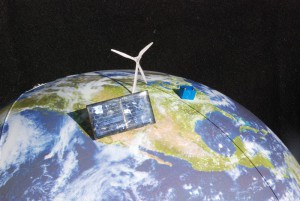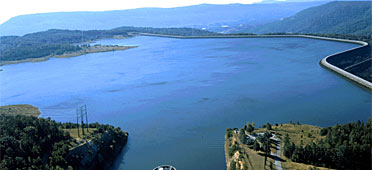 A few weeks back, I made the case that relying on space to provide an infinite resource base into which we grow/expand forever is misguided. Not only is it much harder than many people appreciate, but it represents a distraction to the message that growth cannot continue on Earth and we should get busy planning a transition to a non-growth-based, truly sustainable existence. To prove what a distraction it is, I will distract myself again this week with another space post. This time, true to the brand, I will do the math on why the infinite resources of space appear to be of questionable use to our human enterprise.
A few weeks back, I made the case that relying on space to provide an infinite resource base into which we grow/expand forever is misguided. Not only is it much harder than many people appreciate, but it represents a distraction to the message that growth cannot continue on Earth and we should get busy planning a transition to a non-growth-based, truly sustainable existence. To prove what a distraction it is, I will distract myself again this week with another space post. This time, true to the brand, I will do the math on why the infinite resources of space appear to be of questionable use to our human enterprise.
Part of my motivation comes from the bruised, and bruising comments in reaction to the Why Not Space? post. The faith is strong that technologies are already in hand and that we just need NASA to get out of the way so the commercial bounty of the sky will open up and we’ll finally be off to the races. I myself refrained from ruling out such a future, but the mere suggestion that we may fail to expand into space was clearly considered by many to be ridiculous—as if such a fate is predestined: as sure as the sun will tomorrow. Sociological impulses tugged at my physicist bones, tempting me to study exactly how such an unshakable faith has been implanted in so many obviously smart people. For these folks, the arc of the future is as sure as the historical progression from the Dark Ages until now. Wait? Was there something before the Dark Ages? Something grand? Alas, my history fails me.
Leaving the sociology aside—but before we get busy with the math—I’ll share the story that during the comment firestorm, an individual contacted me from NASA headquarters (not to revoke my funding, thankfully), offering thoughtful perspectives on space policy. The part I can’t shake is the statement that it takes decades of serious research to answer two simple questions: “Can humans live and work in space for the long term?” and “Can an economically viable activity be found in space?” Opinions aside, these are open questions, and have been for some time. We have no proof—or even firm expectation—that either is practical or possible.
Lots of Stuff
Around the time of the final U.S. Space Shuttle flight, a NASA official was asked in a radio interview to explain what was left to inspire young kids about space. The answer was that mining asteroids and the Moon offered a new grand challenge to inspire our kidlets. Granted, space mining probably is a bit more inspiring than off-shore drilling or coal mining as a career choice. It’s got space in it. But are we really serious about getting materials from other bodies within the solar system?
Continue reading →
Views: 12505
 I will take my usual approach and estimate what I can—as opposed to researching the results of detailed studies. It’s part of the process of personal mastery of the big-picture issues, while also providing a sanity-check. In exploring useful reactions to the looming peak oil crisis (or pick your favorite rationale for weaning ourselves from fossil fuels), an appropriate strategy is to assess ballpark capacities of the various options. Some will prove to be orders-of-magnitude more prodigious than we need, others will be marginal, and many will show themselves to be woefully inadequate to match the required scale. So the goal is to perform this crude sorting process into abundant, useful, and waste of time.
I will take my usual approach and estimate what I can—as opposed to researching the results of detailed studies. It’s part of the process of personal mastery of the big-picture issues, while also providing a sanity-check. In exploring useful reactions to the looming peak oil crisis (or pick your favorite rationale for weaning ourselves from fossil fuels), an appropriate strategy is to assess ballpark capacities of the various options. Some will prove to be orders-of-magnitude more prodigious than we need, others will be marginal, and many will show themselves to be woefully inadequate to match the required scale. So the goal is to perform this crude sorting process into abundant, useful, and waste of time.







